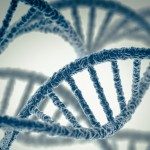We compared the experimental and natural evolution of legume symbionts caused by the acquisition of essential symbiotic genes and followed by genome adaptation under plant selection pressure. We analysed the experimental adaptation to Mimosa of an originally non-symbiotic bacterium –Ralstonia solanacearum– after receiving a symbiotic plasmid and compared it to the natural history of Cupriavidus taiwanensis that became a Mimosa symbiont after the acquisition of a similar plasmid.
We highlighted three major parallels between natural and experimental processes: 1) The population genetics patterns show dominance of purifying selection and episodic positive selection. 2) Positions under positive selection in nature and adaptive mutations in the experiment were found in the genome background, not on the plasmid carrying the novel adaptive traits. 3) An homologous cell-density sensing system acquired adaptive mutations in nature and in the experiment, showing how sensing environmental population is crucial to the evolution of both virulence and symbiosis.
This is one the first examples showing that adaptation by experimental evolution parallels the adaptation of natural population, despite major differences in time span, protagonists and environmental conditions. Hence, our findings highlight the potential of coupling natural and experimental evolution studies to get insights into complex processes such as symbiogenesis.
© Recherche
Actualités





